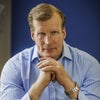Right after last fall's election, we conducted a survey to see how small businesses were feeling about the future. The results were telling: 82 percent of small businesses are planning for growth this year.
Other research supports our findings: the National Federation of Independent Business (NFIB) December 2016 Small Business Optimism Index [PDF] showed small business optimism levels at 105.8. That's up from 98.4 in November and represents a 12-year high. In other words, small businesses haven't been this optimistic since George W. Bush was about to start his second term.
Around the office, we were wondering: how closely do small-business optimism levels match actual economic outcomes? In other words, are business owners generally "right" when they have a rosy outlook for the future?
My team tried to answer the question by pointing out that entrepreneurs tend to be more optimistic than other people, so maybe these numbers were a reflection. And then they looked over at me and someone pointed out that we could answer the question with data.
Small Business Expectations vs. Reality: 2004
What SBOs expected: Small business optimism levels were about 105 in 2004. Even January 2005 saw high hopes: optimism levels were at 103.5.
What they got: According to the SBA's 2005 Small Business Economy report [PDF], small businesses were on track with their outlook – at least for the short term. The report notes the economic recovery that started in 2003 continued through 2004. The ranks of the self-employed increased, and small business borrowing was up, which is a strong indicator of economic health.
Small-business owners saw an uptick and got hopeful for what lay ahead.
Small Business Expectations vs. Reality: 2007
What SBOs expected: The NFIB notes that the optimism levels started at 98.9 percent at the beginning of 2007. That hopefulness might be based on indicators from the previous year when unemployment declined to 4.6 percent and small firms accounted for all of the new net jobs available, according to the SBA. However, the report also notes that small business borrowing declined from $304 billion to $289 billion in 2006.
Maybe small-business owners sensed trouble on the horizon because 2007 finished out at a 94.6 optimism level, right as the recession started.
What they got: We now know the end of 2007 was the start of the biggest recession in the United States since the Great Depression.
Small Business Expectations vs. Reality: 2009
What SBOs expected: Not much. March 2009 saw the second lowest optimism level ever recorded by the NFIB: 81. Only the 80.1 clocked during April 1980 rivaled that number.
What they got: Between 2008 and 2010, more than 170,000 small businesses closed, according to the Business Journals On Numbers analysis. Small-business owners watched opportunities and funding dry up, and their optimism levels reflected that.
What the Data Tells Us about Small Business Optimism
These trends show us that small businesses are paying attention to their surroundings, but their optimism may depend more on what just happened than on what the future holds.
If that's the case, small-business owners might be excited about the new administration's promises to cut taxes and reduce regulations. But the rose-tinted shades were likely also polished by economic improvements under the Obama administration, such as the 4.7 percent unemployment rate and the decline in the number of small business "deaths" and rise in small business "births."
Unfortunately, business owner optimism isn't a crystal ball. Only time will tell what's coming.
